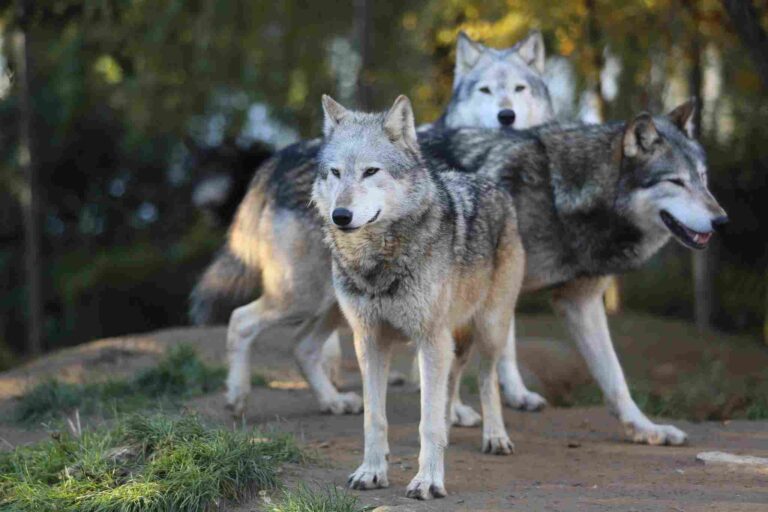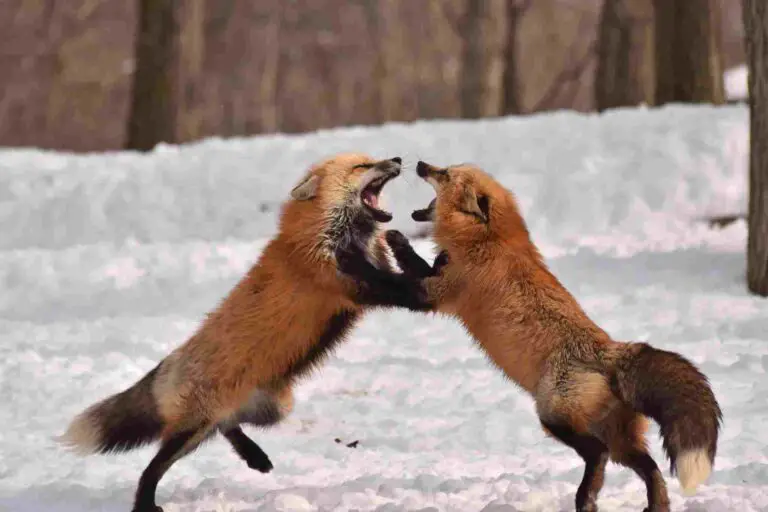Cat Vs Snake Who Will Win, Overall Comparison
Exploring the hypothetical scenario of a cat encountering a snake sheds light on the contrasting attributes of these creatures. With distinct physical characteristics and behaviors, the cat, being larger, heavier, stronger, and more agile, generally holds the advantage in a confrontational situation. However, it’s important to note that some large venomous snakes, such as cobras or pythons, can present formidable challenges to a cat.
Cat vs Snake Who Would Win: Understanding Feline and Serpent Dynamics
I. Physical Attributes:
– Cats, known for their agility, are generally larger, heavier, and stronger compared to snakes, providing them with a physical advantage in potential confrontations.
II. Agility and Speed:
– Cats exhibit remarkable agility and speed, allowing them to navigate and respond swiftly in encounters with snakes, making it challenging for the serpent to gain the upper hand.
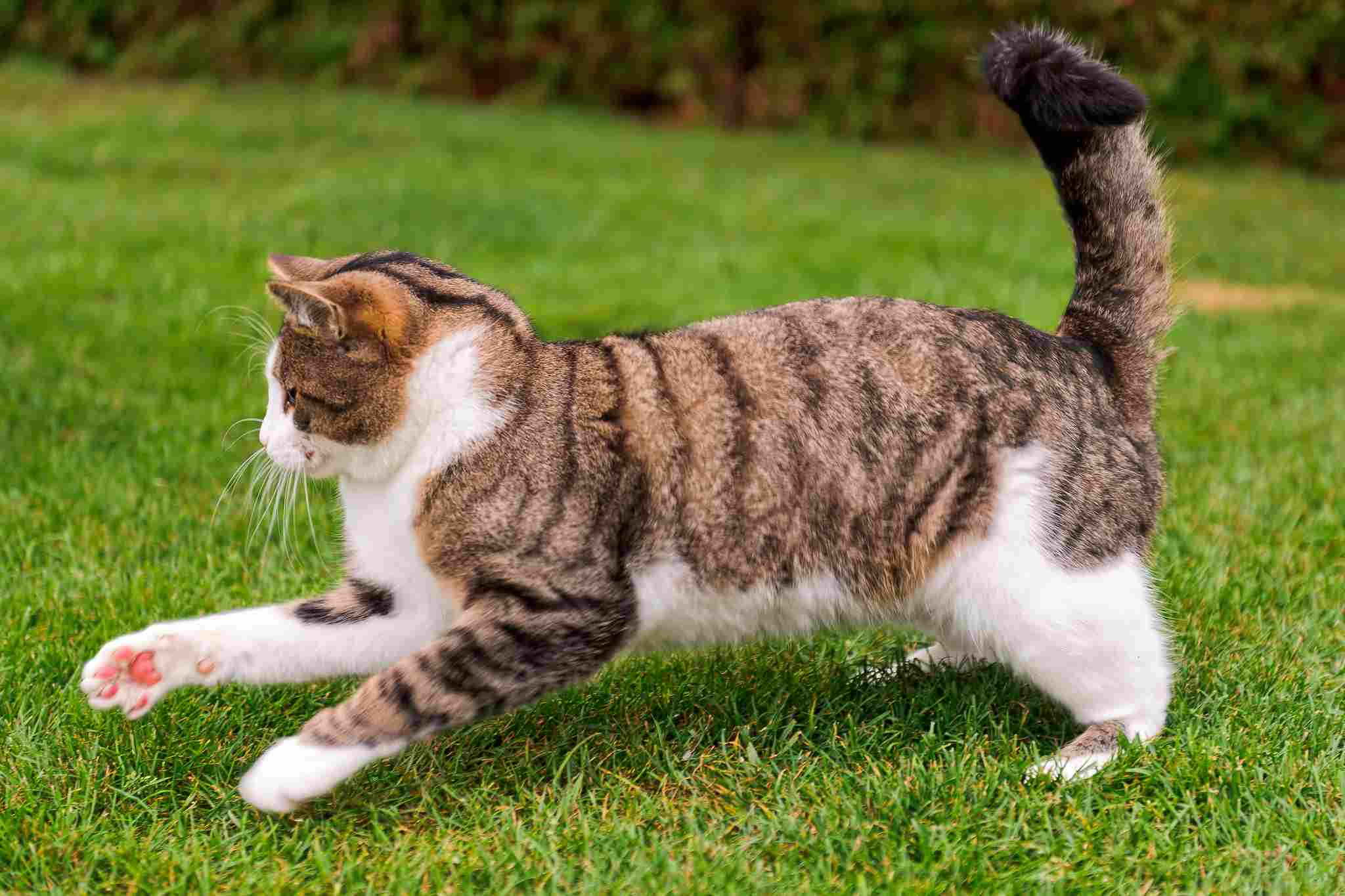
III. Defensive Tactics:
– Cats are equipped with sharp claws and teeth, enabling them to employ effective defensive tactics against snakes. The cat’s ability to strike and retreat quickly enhances its defensive capabilities.
IV. Size Disparity:
– The cat’s larger size, coupled with its strength, can be a significant factor in overcoming a snake, particularly in scenarios where the feline adopts an assertive stance.
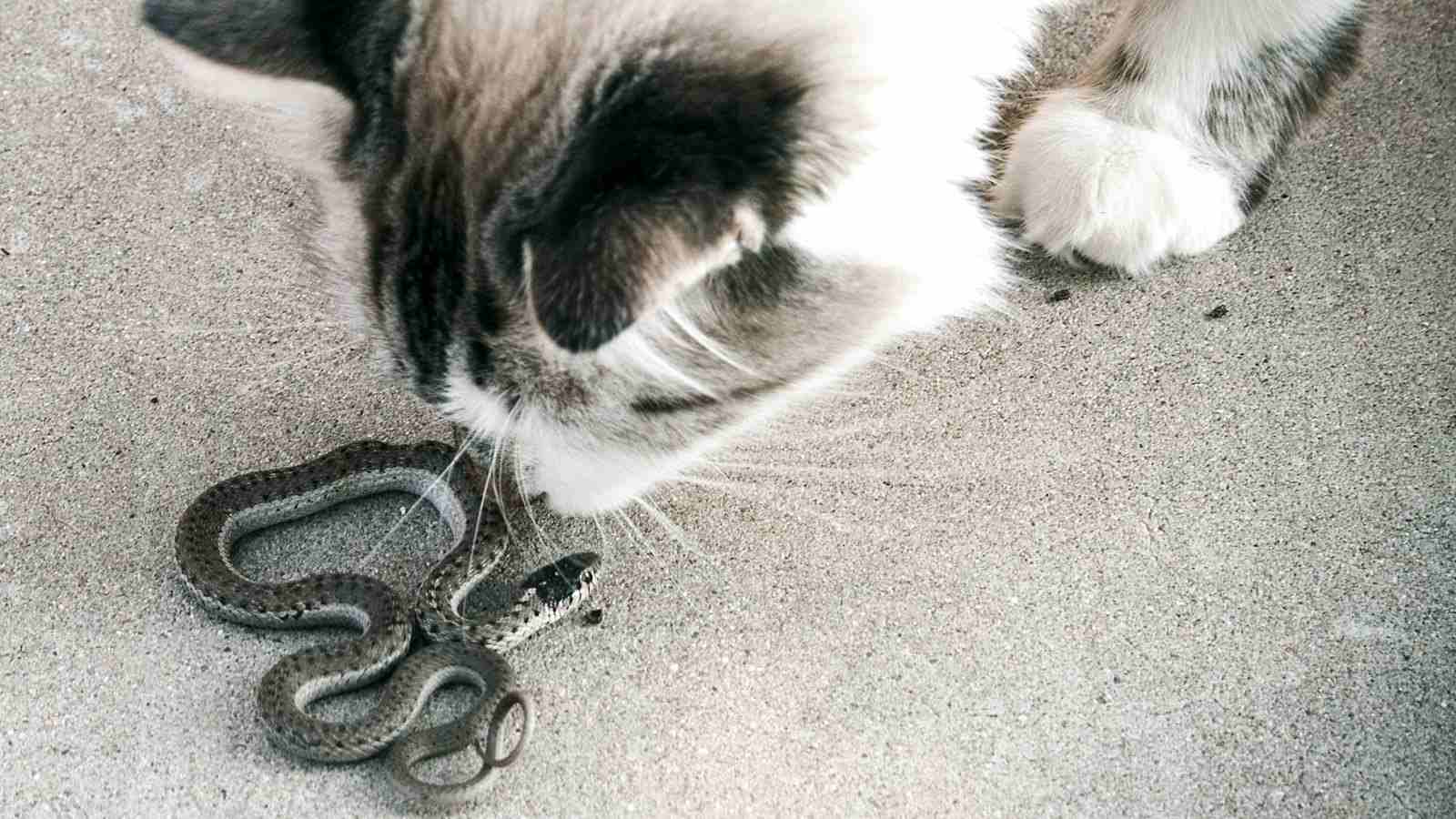
V. Snake Varieties:
– While cats generally have the advantage, it’s crucial to acknowledge that some large venomous snakes, such as cobras or pythons, possess attributes that can pose a challenge even to a formidable feline adversary.
VI. Venomous Threat:
– Venomous snakes, with their potent toxins, can potentially be dangerous to cats. Therefore, the cat’s ability to discern and avoid such threats is essential in ensuring its safety.
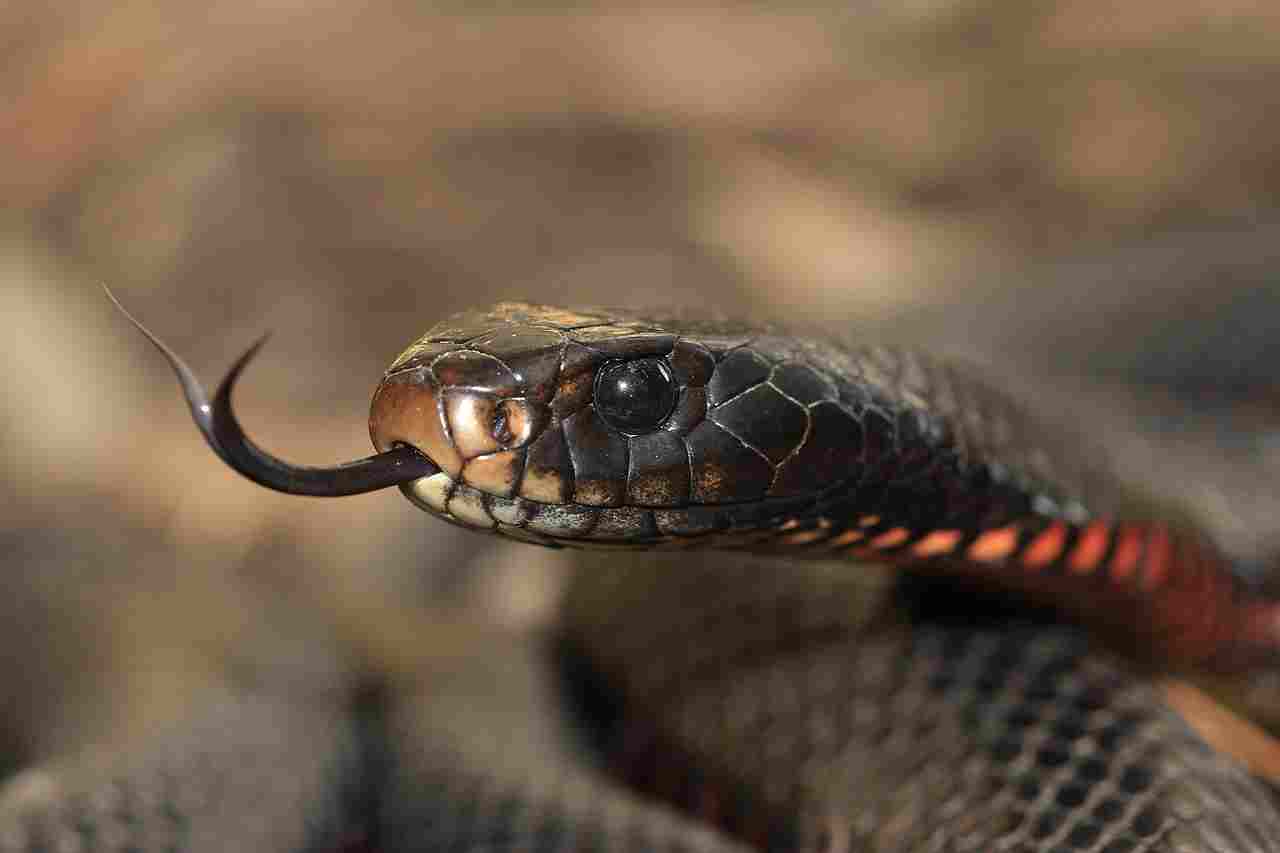
VII. Constrictor Challenges:
– Large constrictor snakes, like pythons, possess the ability to overpower animals through constriction. In such cases, a cat may face challenges, emphasizing the importance of cautious encounters.
VIII. Real-world Considerations:
– In real-world scenarios, the outcome of a cat vs snake encounter is nuanced and depends on various factors, including the species of snake, the size and agility of the cat, and the specific circumstances of the confrontation.
IX. Coexisting Safely:
– Understanding the dynamics between cats and snakes highlights the need for responsible pet ownership, awareness of local wildlife, and measures to ensure the safety of both cats and snakes in shared environments.
*Details of Comparison
| Criteria | Cats (Felis catus) |
Snakes (Venomous and Non-venomous)
|
| Taxonomy | Class: Mammalia |
Class: Reptilia (Suborder: Serpentes for snakes)
|
| Appearance | Diverse among breeds, compact body |
Varied body shapes, colors; venomous with fangs
|
| Size | Broad range among breeds |
Broad size spectrum, including tiny to massive
|
| Weight | Generally consistent |
Varies widely, influenced by species and size
|
| Bite Force (PSI) | Relies on teeth and claws |
Venomous snakes use bite force for venom delivery
|
| Physical Offensive Advantages | Claws, teeth, agility, speed |
Constriction, venom, stealth
|
| Physical Defensive Advantages | Agility, speed, camouflage |
Agility, speed, camouflage
|
| Speed | Higher sustained speeds |
Relies on bursts of speed
|
| Agility | Limbs, flexible spine |
Serpentine movements
|
| Senses | Vision, acute hearing, keen smell |
Limited visual acuity, vibrations, keen smell
|
| Overall Physical Capacity | Impressive adaptability and skills |
Varied physical capabilities
|
| Habitat Preference(s) | Highly adaptable |
Diverse habitat preferences
|
| Tracks | Paw prints with claws |
No traditional tracks; scaled belly imprints
|
| Lifespan | Generally longer |
Varies widely based on species and environment
|
| Mode of Feeding | Carnivores, use teeth and claws |
Carnivores; constriction, venom for hunting
|
| Intelligence | Higher intelligence, problem-solving |
Limited cognitive abilities
|
| Social Behavior | Tend to be solitary, some variation |
Generally solitary, limited social interactions
|
| Mode of Reproduction | Viviparous |
Oviparous and viviparous
|
| Parental Behavior | Extensive care for offspring |
Limited parental care; varied strategies
|
| Proximity to Human-Inhabited Areas | Closely associated, urban presence |
Presence varies, some adapt to urban environments
|
| Behavior Toward Humans | Wide range, influenced by domestication |
Tends to avoid humans, may act defensively
|
| Danger Posed to Humans | Generally low risk, infections possible |
Venomous snakes can pose life-threatening risks
|
| Associated Precautions | Responsible pet ownership |
Awareness, safe handling practices
|
| Conservation Status | Not endangered; impact on wildlife |
Conservation status varies; some face challenges
|
Key Points
- Both cats and snakes have diverse adaptations suited to their ecological roles.
- Cats are generally more closely associated with humans, while snakes often maintain a more elusive presence.
- Venomous snakes pose a higher danger to humans than domestic cats.
- Conservation efforts are crucial for certain snake species facing threats.
- The comparison highlights the unique contributions of each species to their ecosystems and the need for responsible coexistence.
1. Taxonomy:
Cat (Felis catus):
Kingdom: Animalia
Phylum: Chordata
Class: Mammalia
Order: Carnivora
Family: Felidae
Genus: Felis
Species: F. catus
Snake (Venomous and Non-venomous):
Kingdom: Animalia
Phylum: Chordata
Class: Reptilia
Order: Squamata (Suborder: Serpentes for snakes)
Families: Varies (e.g., Elapidae, Viperidae, Colubridae)
Genera and Species: Numerous, depending on the specific snake species
2. Appearance:
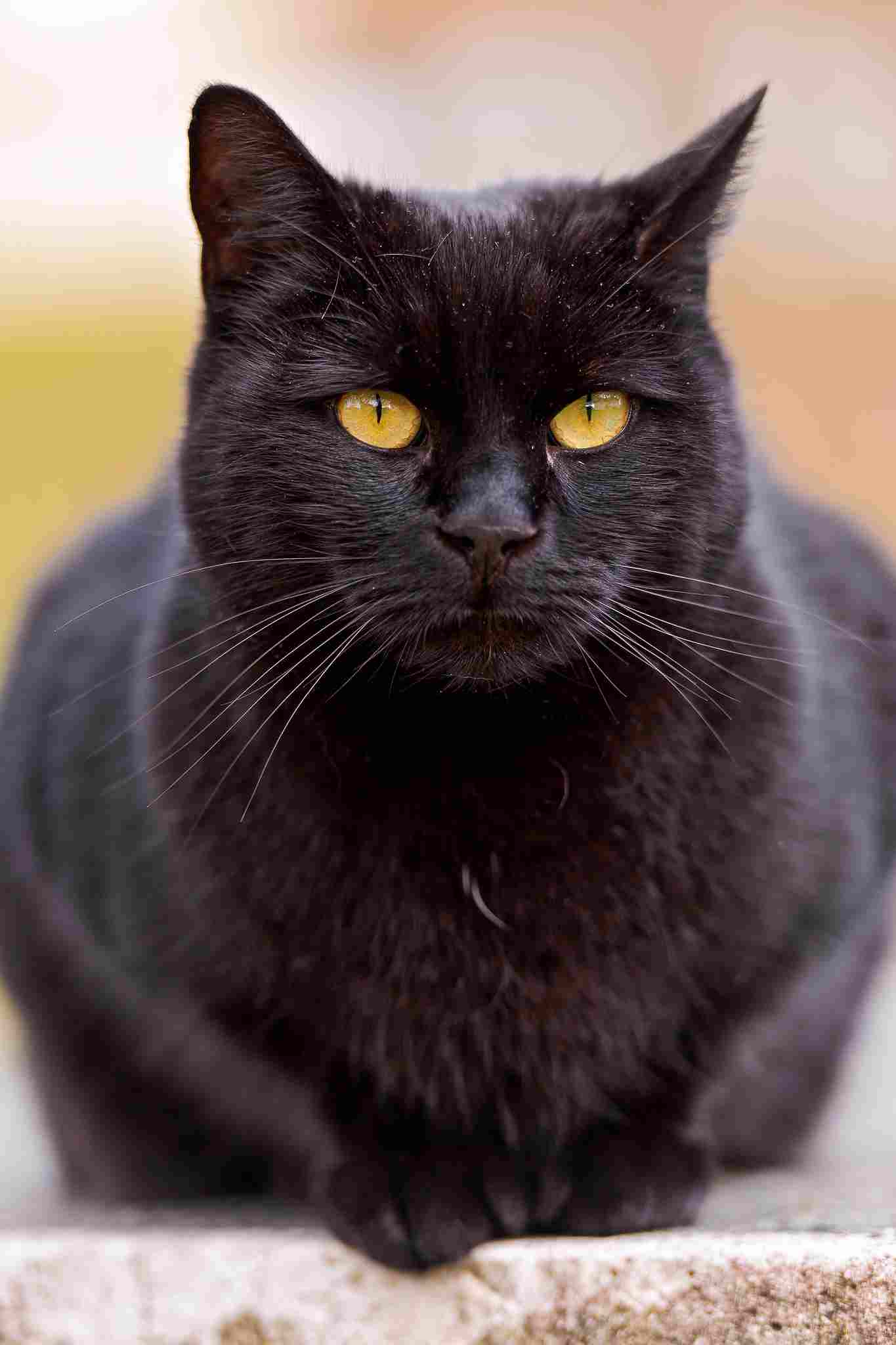
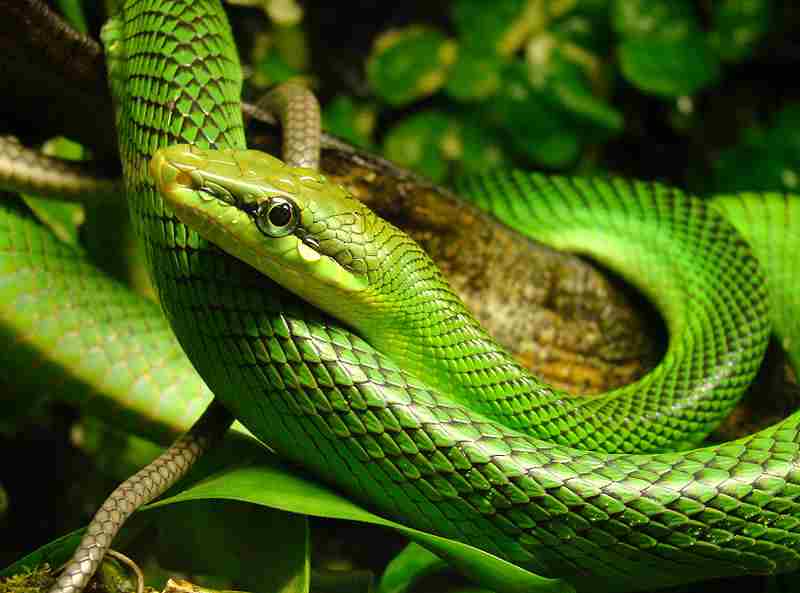
Cat (Felis catus):
Appearance varies widely among breeds, with diverse fur lengths, patterns, and colors.
Typically have a compact, muscular body, retractable claws, and sharp teeth.
Adaptations for both predator and domestic roles.
Snake (Venomous and Non-venomous):
Diverse appearances; range from slender and elongated (e.g., cobras) to stout and robust (e.g., pythons).
Scales cover the body, providing protection and aiding in movement.
Venomous snakes may have specialized features like fangs and venom glands.
Comparison: Cats and snakes exhibit diverse appearances, but cats have more visible variability due to the wide range of breeds. Snakes, however, show distinct adaptations for their ecological roles, with venomous species showcasing specialized structures for venom delivery.
Ecological Implications: The varied appearances in cats may influence their roles in different environments, from hunting in the wild to companionship in human homes. Snakes’ appearances often correlate with their hunting strategies and habitats, impacting their ecological niche.
3. Size:
Cat (Felis catus):
Sizes range significantly among breeds, from small (e.g., Singapura) to large (e.g., Maine Coon).
Typically, domestic cats have a smaller size compared to some wild felids.
Snake (Venomous and Non-venomous):
Enormous variation; snakes can be as small as a few inches (e.g., thread snakes) to over 30 feet (e.g., reticulated pythons).
Venomous snakes may not always be larger; size depends on the species.
Comparison: Both cats and snakes exhibit a wide range of sizes, with cats typically smaller than snakes. However, snakes showcase a broader size spectrum, including both diminutive and massive species.
Ecological Implications: Size influences an animal’s role in the food chain and ecosystem. Cats, as predators, may impact local fauna, especially in human-altered environments. Snakes’ sizes relate to their hunting strategies, with larger species potentially playing different ecological roles.
4. Weight:
Cat (Felis catus):
Weights vary widely; domestic cats can weigh from 5 to 20 pounds or more.
Wild felids may have different weight ranges based on the species.
Snake (Venomous and Non-venomous):
Weight ranges from a few grams for small species to several hundred pounds for large constrictors like anacondas.
Venomous snakes can be lighter due to adaptations for swift movement.
Comparison: Cats generally have more consistent weights across species compared to snakes, where weight can vary dramatically. Snakes exhibit extremes, from tiny species to massive constrictors.
Ecological Implications: Weight affects an animal’s energy requirements, hunting strategies, and overall ecological impact. In the case of snakes, weight may influence their ability to constrict prey or their agility in pursuit.
5. Bite Force (PSI – Pounds per Square Inch):
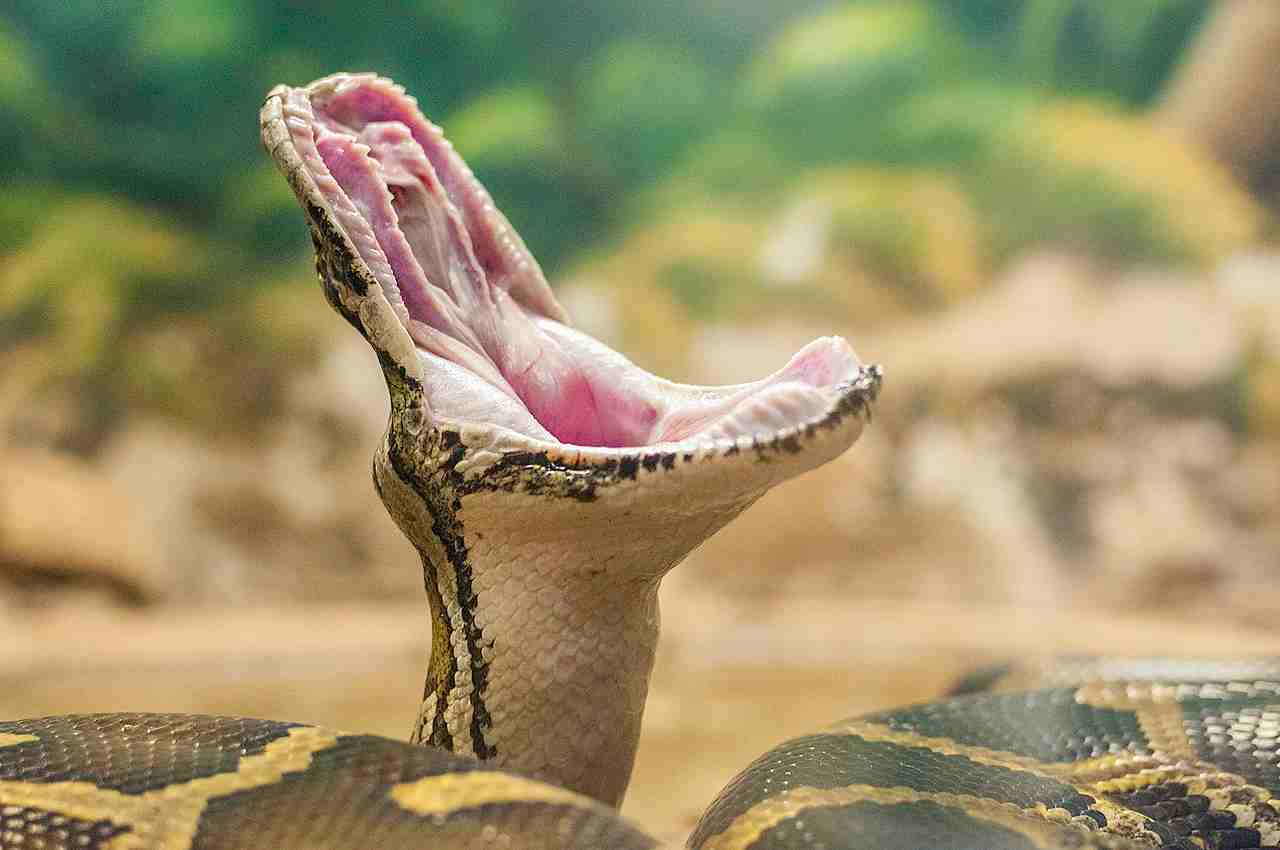
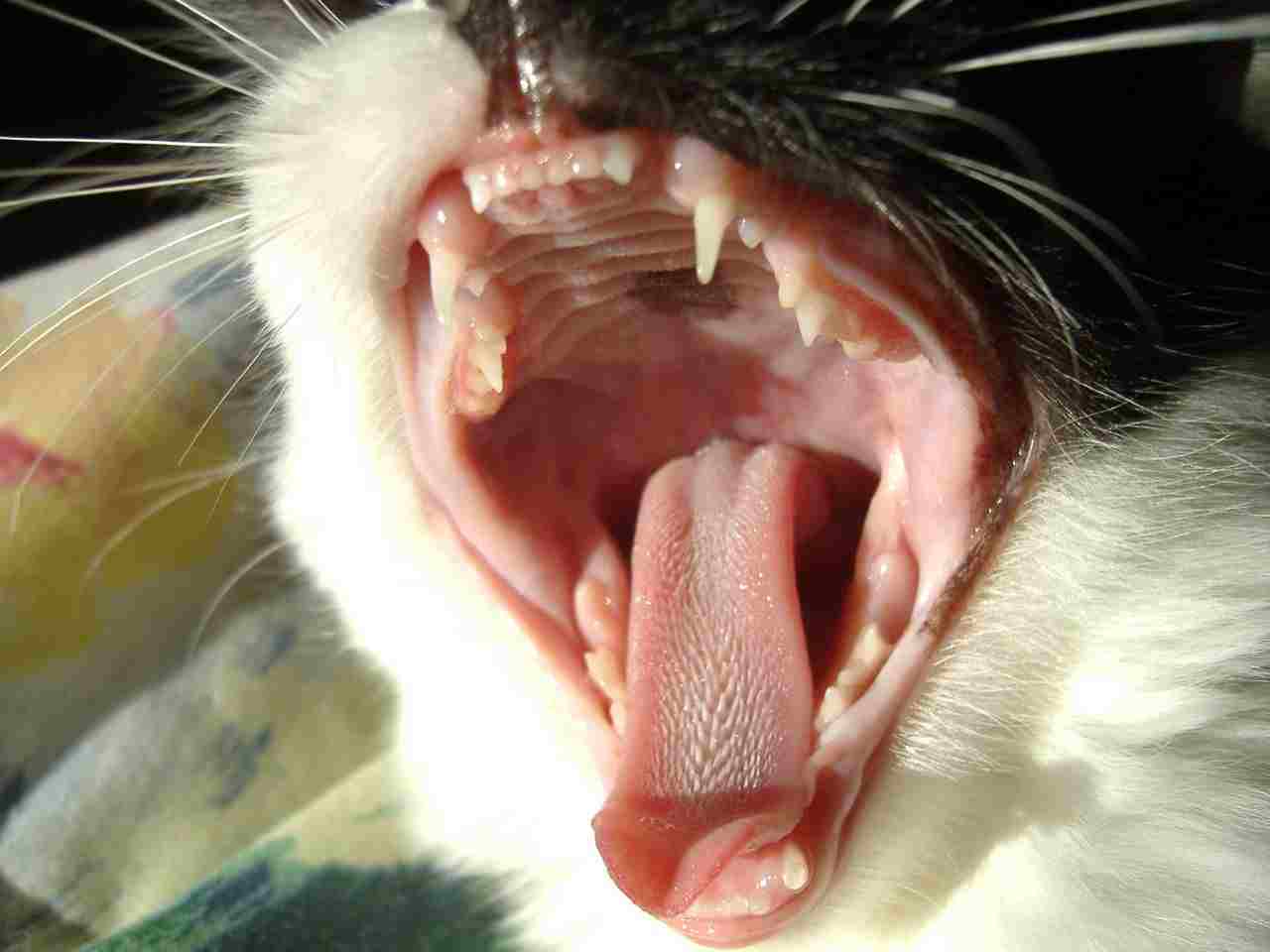
Cat (Felis catus):
Bite force varies, but domestic cats generally have a lower bite force compared to larger wild felids.
Specialized for shearing and tearing meat.
Snake (Venomous and Non-venomous):
Bite force varies; non-venomous snakes often have lower bite forces.
Venomous snakes may have more substantial bite forces, aided by specialized fangs.
Comparison: Cats and snakes employ different mechanisms for biting. Cats use their teeth for gripping and tearing, while snakes, especially venomous ones, rely on bite force to inject venom.
Ecological Implications: Bite force relates to an animal’s hunting and feeding strategies. In cats, it influences their ability to subdue prey, while in snakes, it aids in prey immobilization and venom delivery. The ecological impact is evident in their roles within ecosystems.
6. Physical Offensive Advantages:
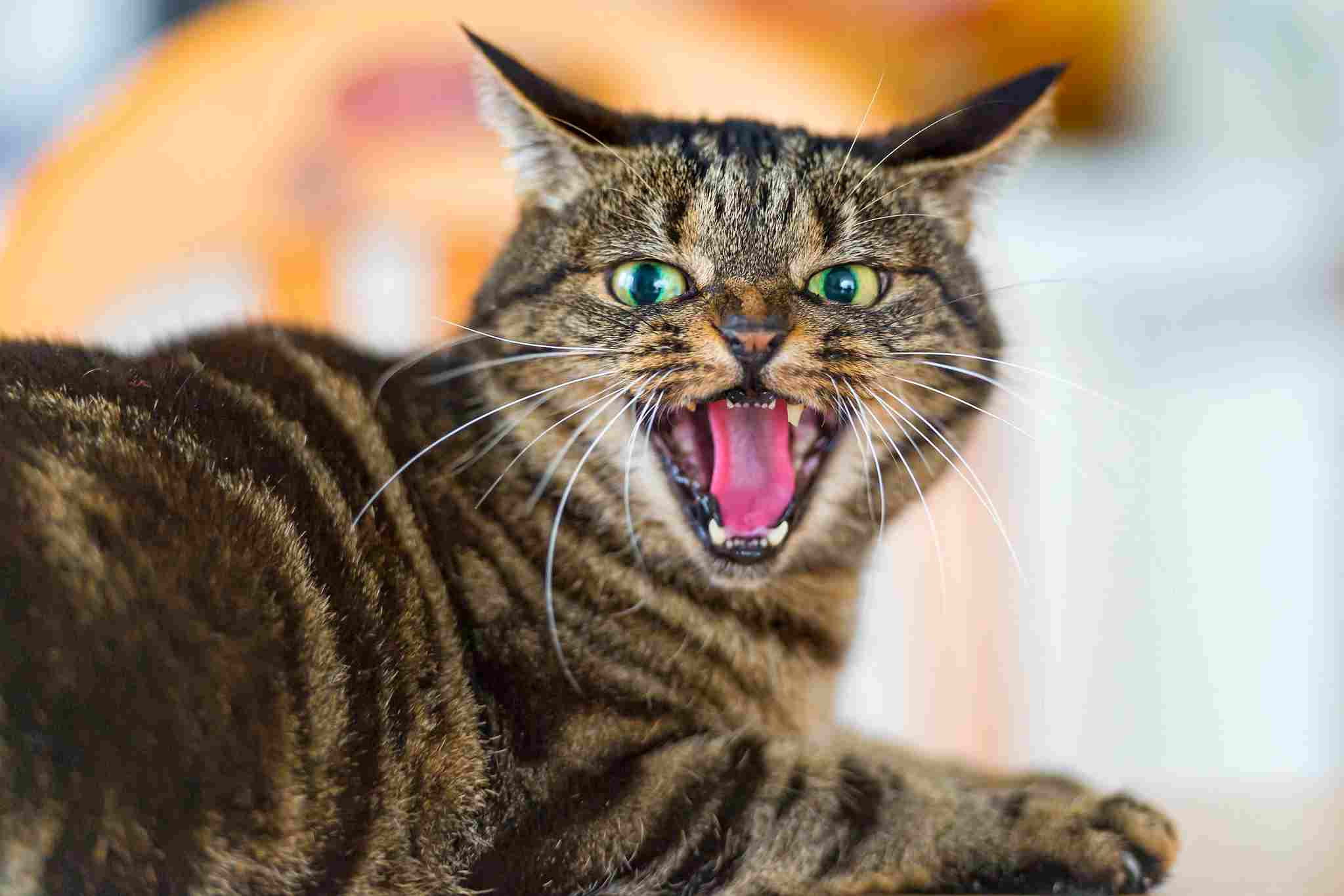
Cat (Felis catus):
Sharp claws and teeth for hunting and self-defense.
Agility and speed aid in ambushing prey or escaping predators.
Excellent night vision enhances their ability to navigate and hunt in low-light conditions.
Snake (Venomous and Non-venomous):
Constrictors (non-venomous) possess powerful muscles for constriction.
Venomous snakes have specialized fangs and venom for subduing prey.
Camouflage and stealth enable snakes to approach prey undetected.
Comparison: Cats rely on a combination of sharp claws, teeth, agility, and speed for offense. Non-venomous snakes use constriction, while venomous ones deploy venom and specialized fangs.
Ecological Implications: These offensive adaptations are crucial for securing prey and self-defense, contributing to the ecological roles of cats and snakes in their respective habitats.
7. Physical Defensive Advantages:
Cat (Felis catus):
Agility and speed aid in evading predators.
Flexible spine allows contortion, making it challenging for predators to grasp.
Sharp claws and teeth serve as defensive tools.
Snake (Venomous and Non-venomous):
Camouflage and mimicry help avoid detection.
Rapid retreat or burrowing is a common defensive strategy.
Venomous snakes use venom as a deterrent, and some have warning coloration.
Comparison: Both cats and snakes employ speed, agility, and physical adaptations for defense. Cats use their flexibility and sharp features, while snakes rely on camouflage, mimicry, and venomous deterrents.
Ecological Implications: These defensive strategies play a crucial role in the survival of both species, influencing their interactions with predators, competitors, and their overall impact on ecosystems.
8. Speed (Km/hour or Mile/hour):
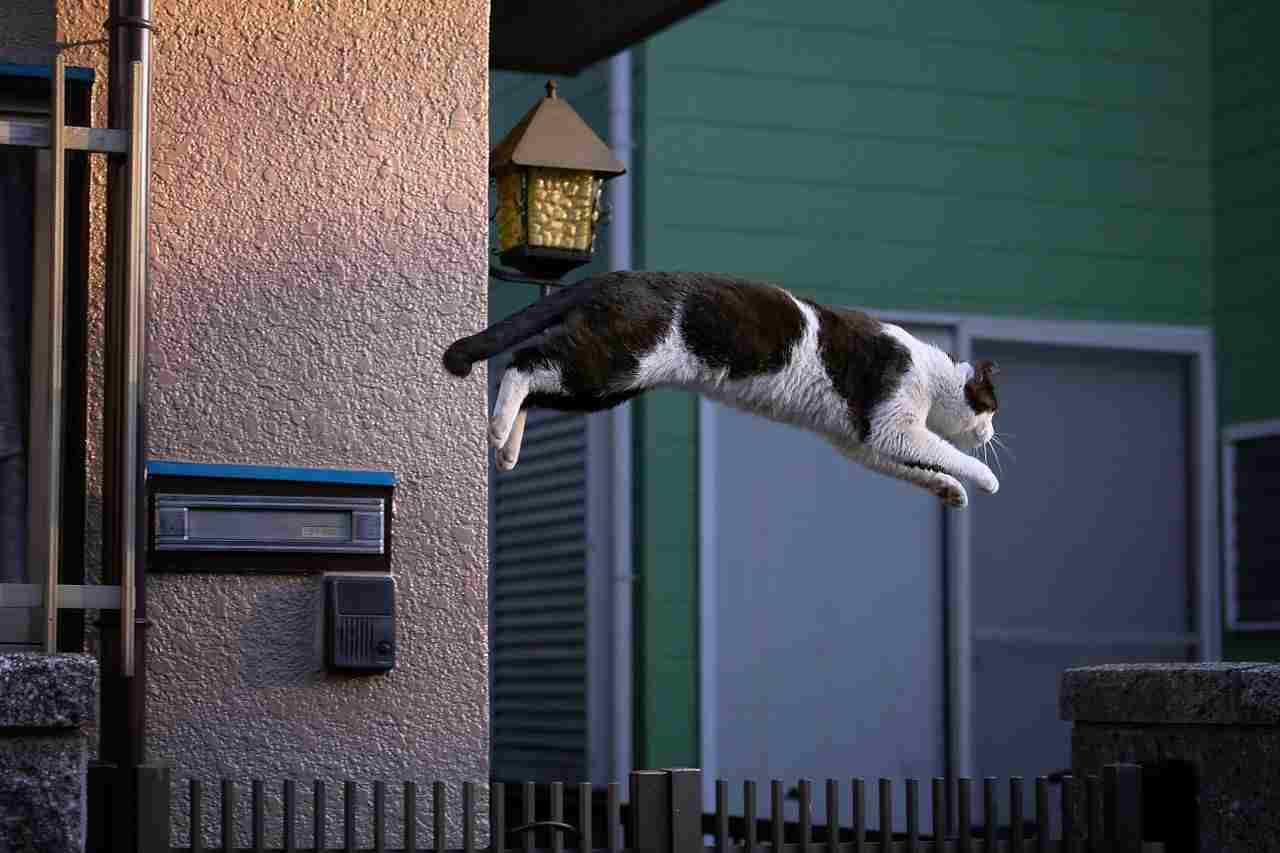
Cat (Felis catus):
Domestic cats can reach speeds of 30 miles per hour in short bursts.
Exceptional acceleration and agility aid in hunting and escaping threats.
Snake (Venomous and Non-venomous):
Snakes exhibit varied speeds; some can move at a few miles per hour, while others are capable of rapid bursts.
Sidewinding and serpentine movements contribute to their speed.
Comparison: Cats generally have higher sustained speeds, while snakes may rely more on bursts of speed. The modes of locomotion differ significantly.
Ecological Implications: Speed impacts hunting success and escape from predators, influencing the ecological dynamics of both cats and snakes in their respective environments.
9. Agility:
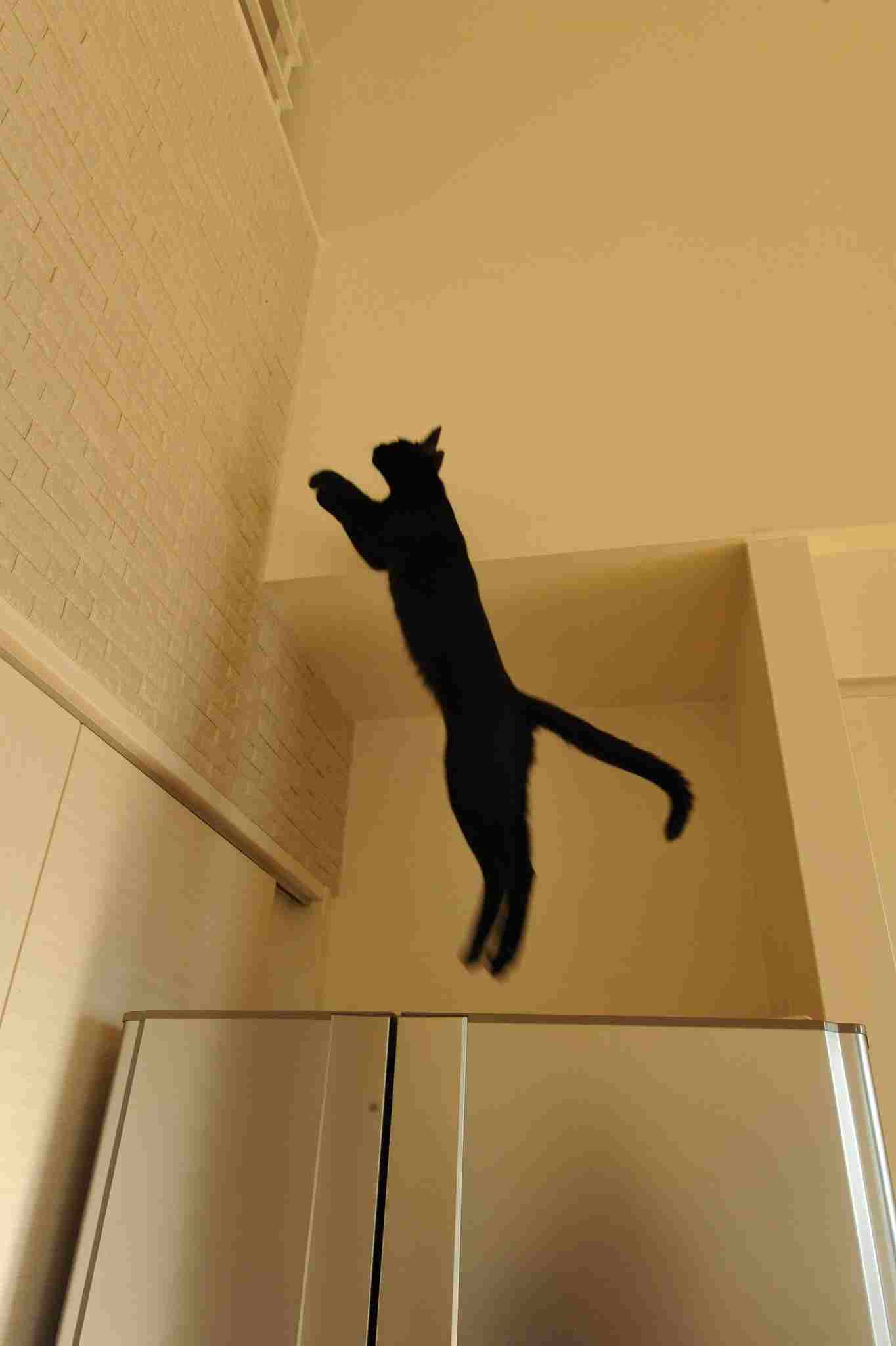
Cat (Felis catus):
Exceptional agility, demonstrated through acrobatic jumps and precise landings.
Flexible spine and strong hind limbs contribute to agile movements.
Snake (Venomous and Non-venomous):
Snakes display remarkable agility, navigating various terrains with serpentine movements.
Flexible bodies allow them to access confined spaces and climb.
Comparison: Both cats and snakes showcase high levels of agility, albeit through different mechanisms. Cats use their limbs and flexible spine, while snakes rely on their serpentine body structure.
Ecological Implications: Agility is vital for maneuvering through complex environments, hunting success, and evading predators. It influences how these species interact with their surroundings and other organisms.
10. Senses:
Cat (Felis catus):
Vision: Cats have excellent night vision, enhanced by a high number of rod cells.
Hearing: Acute hearing, able to detect high-frequency sounds.
Smell: Keen sense of smell, important for hunting and recognizing scents.
Snake (Venomous and Non-venomous):
Vision: Varies among species; many snakes have limited visual acuity.
Hearing: Lack external ears, but can sense vibrations through the ground.
Smell: Highly developed olfactory senses, crucial for tracking prey.
Comparison: Cats rely more on vision and hearing, while snakes heavily depend on their sense of smell. Both have adaptations suited to their ecological roles.
Ecological Implications: Sensory adaptations influence how these animals navigate their environments, locate prey, and communicate, impacting their roles in ecosystems.
11. Overall Physical Capacity:
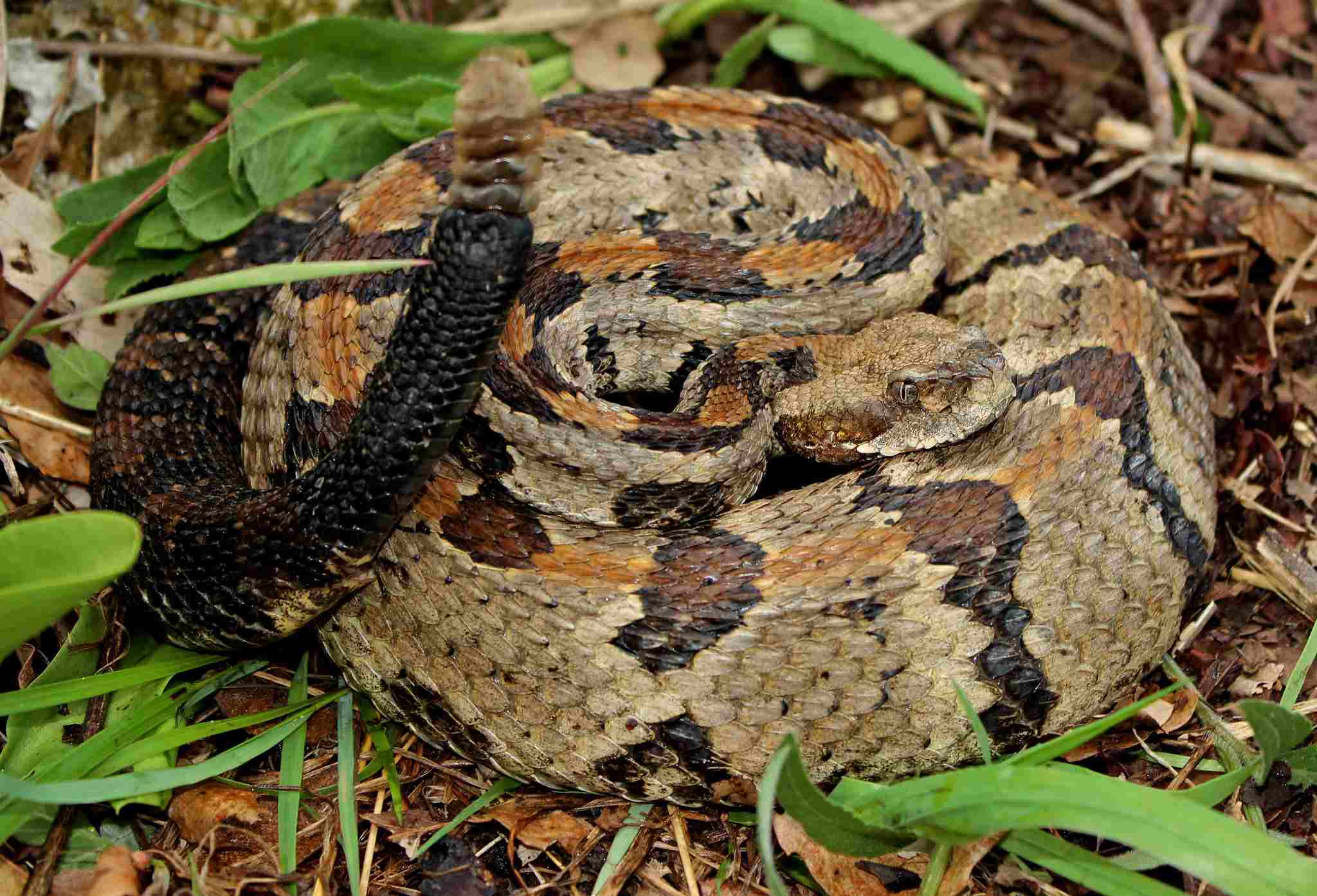
Cat (Felis catus):
Agile climbers and skilled hunters.
Well-adapted for both solitary and group hunting strategies.
Endurance for stalking and pouncing on prey.
Snake (Venomous and Non-venomous):
Efficient predators with various hunting strategies.
Adaptations like constriction or venom delivery enhance hunting success.
Excellent at conserving energy during periods of inactivity.
Comparison: Both cats and snakes exhibit impressive physical capabilities, but the nature of their adaptations differs due to their distinct ecological roles and evolutionary histories.
Ecological Implications: These physical capacities determine how well these species can exploit their environments, impacting their roles as predators and contributors to ecosystem dynamics.
12. Habitat Preference(s):
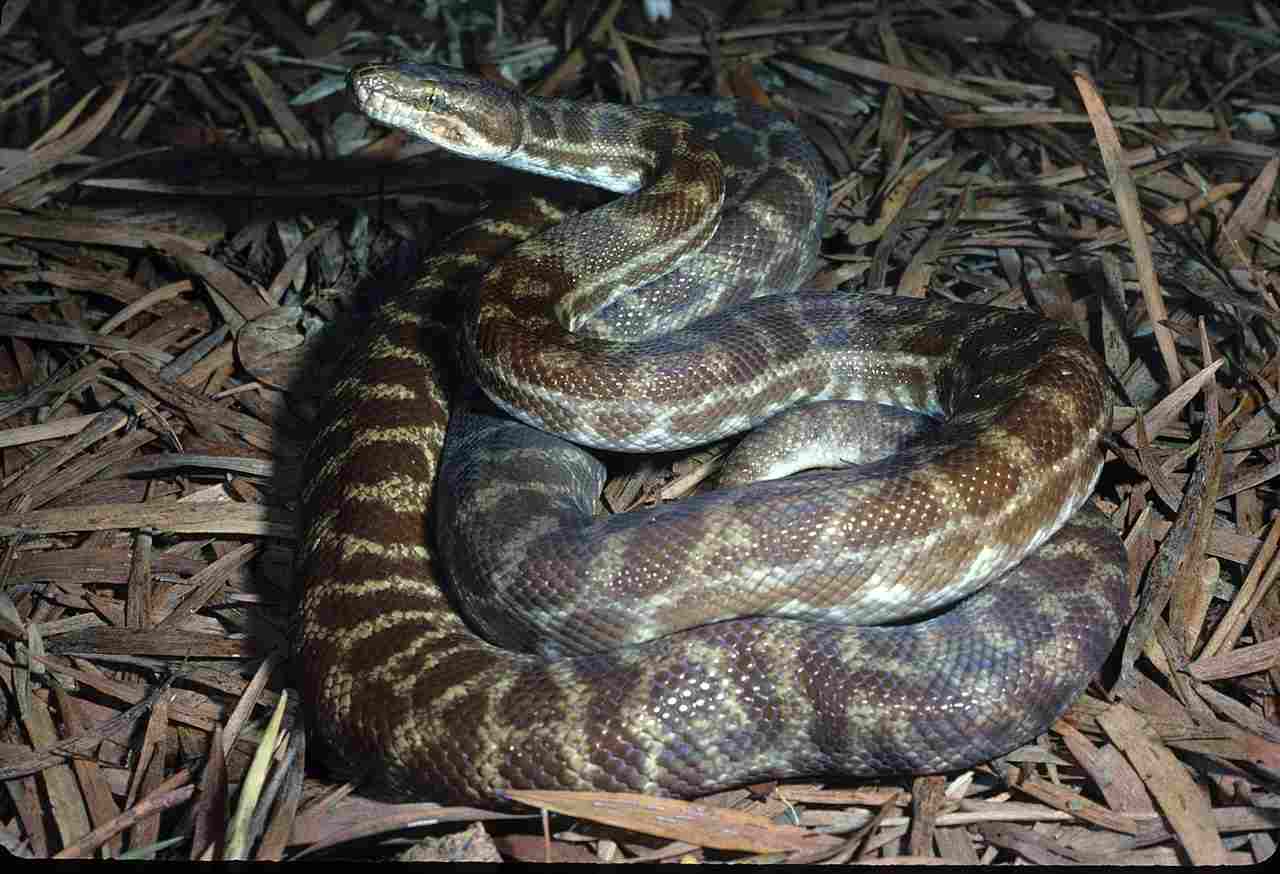
Cat (Felis catus):
Highly adaptable; can thrive in various environments.
Domestic cats coexist with humans, but wild felids may inhabit diverse ecosystems from forests to deserts.
Snake (Venomous and Non-venomous):
Diverse habitat preferences; some prefer arid deserts, while others thrive in rainforests.
Specific adaptations dictate their choice of habitat, such as burrowing or climbing species.
Comparison: While both cats and snakes exhibit adaptability, cats, especially domestic ones, have a broader range of habitats. Snakes’ habitat preferences are often more specialized.
Ecological Implications: Adaptability and habitat preferences determine the ecological niches these species occupy and influence their interactions with other organisms in those habitats.
13. Tracks:
Cat (Felis catus):
Paw prints with distinct toe pads and retractable claws.
Variable sizes depending on the cat’s size and age.
Snake (Venomous and Non-venomous):
Typically do not leave distinct tracks due to their limbless nature.
Scaled belly patterns may leave imprints in certain substrates.
Comparison: Cats leave clear tracks with their paw prints, while snakes, lacking limbs, do not leave traditional tracks. Snake trails may include imprints from their body scales.
Ecological Implications: Tracking and identifying species through prints contribute to ecological research and wildlife monitoring. The absence of clear snake tracks reflects their unique anatomical features and movement patterns.
14. Lifespan:
Cat (Felis catus):
Domestic cats typically live around 12 to 15 years, although some can reach their early twenties.
Wild felids may have shorter lifespans due to harsher environmental conditions.
Snake (Venomous and Non-venomous):
Lifespan varies greatly among species; some snakes may only live a few years, while others can surpass two decades.
Environmental factors, predation, and human impact influence snake lifespans.
Comparison: Cats generally have longer lifespans than many snakes. Variability in snake lifespans is influenced by factors like species, size, and environmental conditions.
Ecological Implications: Lifespan affects the population dynamics of these species, influencing their roles in ecosystems and their interactions with other organisms.
15. Mode of Feeding:
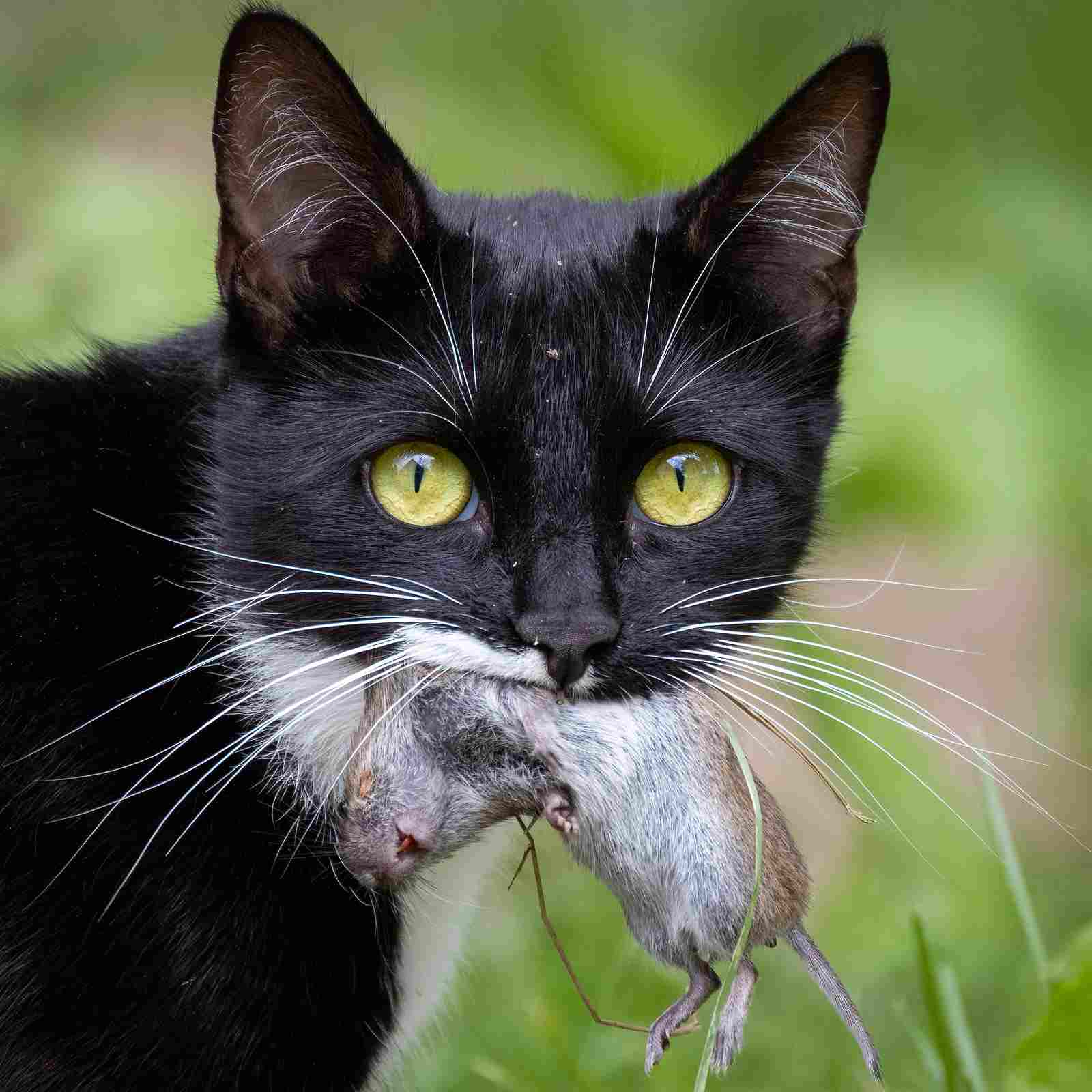
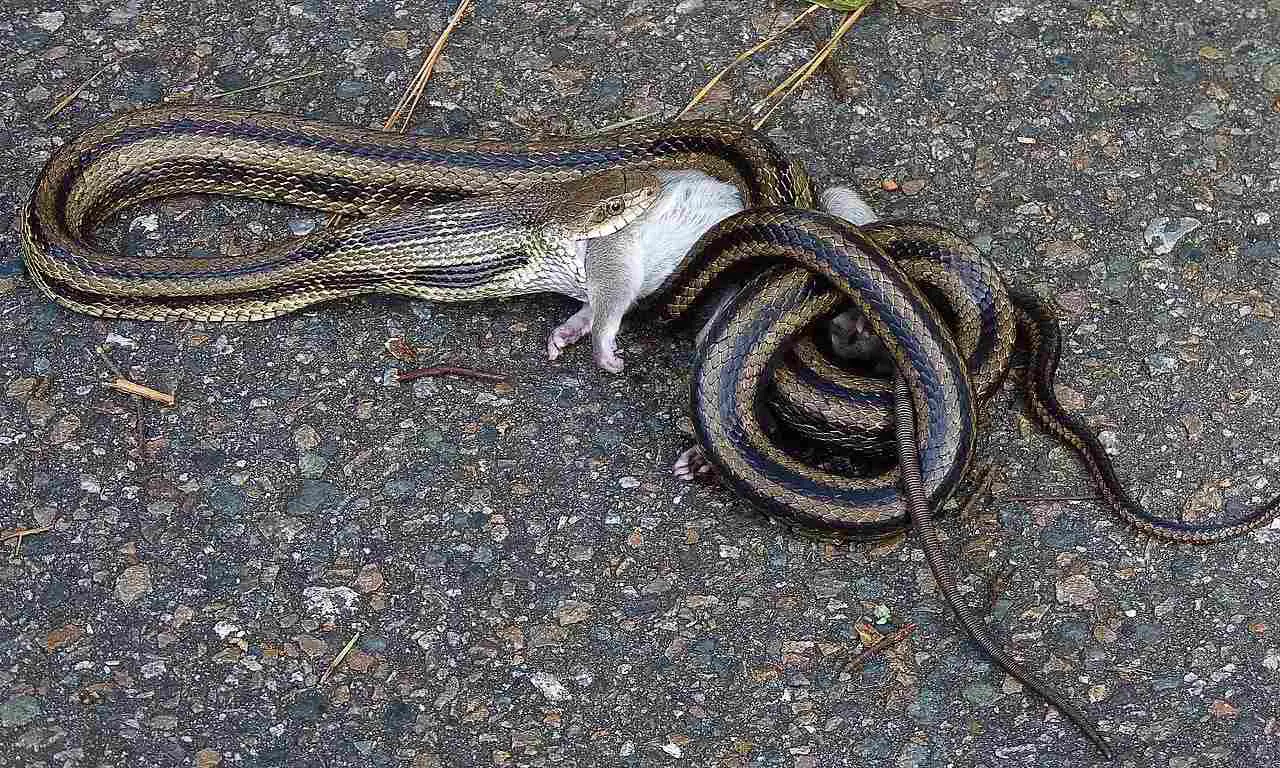
Cat (Felis catus):
Carnivores with a diet primarily consisting of meat.
Exhibit predatory behaviors such as stalking, pouncing, and hunting.
Snake (Venomous and Non-venomous):
Carnivores with diverse feeding strategies.
Constrictors subdue prey by squeezing, while venomous snakes use venom to immobilize and digest prey.
Comparison: Both cats and snakes are carnivores, but their feeding strategies differ. Cats use teeth and claws for hunting, while snakes may rely on constriction or venom.
Ecological Implications: Feeding strategies impact the prey-predator dynamics within ecosystems and contribute to the ecological balance of their respective habitats.
16. Intelligence:
Cat (Felis catus):
Exhibit problem-solving abilities, learning from experiences.
Social intelligence, especially in domesticated settings.
Snake (Venomous and Non-venomous):
Limited cognitive abilities; basic instincts drive behavior.
Some species display problem-solving skills related to hunting and survival.
Comparison: Cats demonstrate higher levels of intelligence, particularly in domestic settings, compared to most snakes. Snakes rely more on instinctual behaviors.
Ecological Implications: Intelligence influences how these species interact with their environment, respond to challenges, and exploit resources, impacting their roles in ecosystems.
17. Social Behavior:
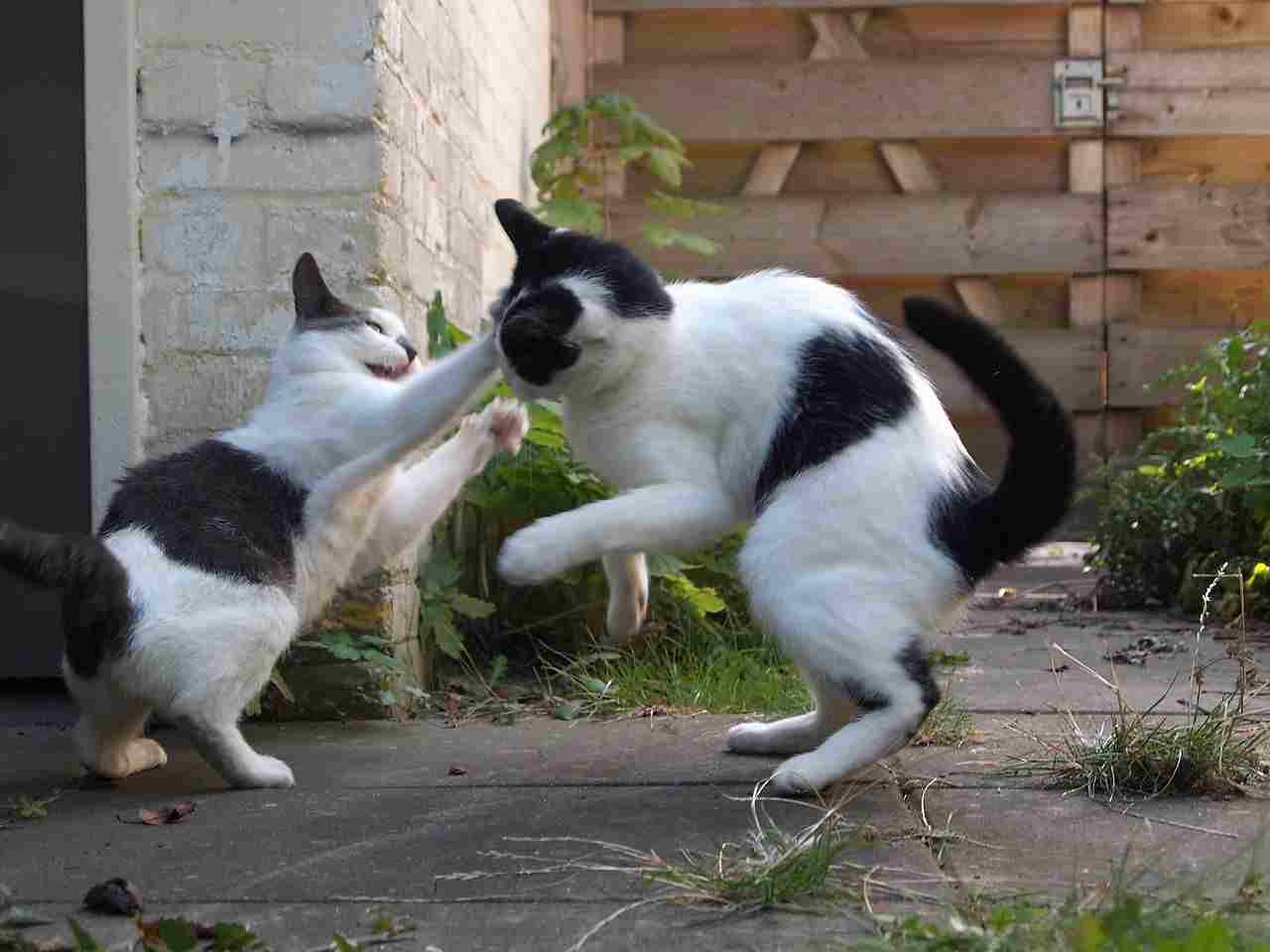
Cat (Felis catus):
Solitary by nature, but some domestic breeds can be social.
Feral cats may form loose colonies, while others prefer solitary living.
Snake (Venomous and Non-venomous):
Generally solitary, with limited social interactions.
Some species may exhibit communal behaviors during specific times, such as mating.
Comparison: Both cats and snakes tend to be solitary, with limited social behaviors. Domestic cats can show more variation based on breed and individual temperament.
Ecological Implications: Social behaviors impact population dynamics, resource utilization, and territoriality, influencing the ecological roles these species play in their habitats.
18. Mode of Reproduction:
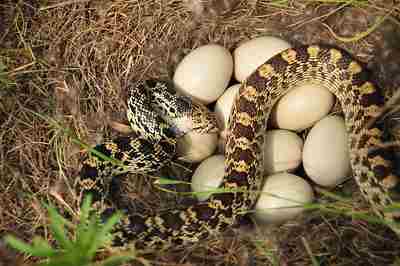
Cat (Felis catus):
Typically give birth to live young (viviparous).
Gestation period is around 63 days.
Multiple litters possible in a year.
Snake (Venomous and Non-venomous):
Most snakes lay eggs (oviparous), while some give birth to live young (viviparous).
Gestation or incubation periods vary widely among species.
Frequency of reproduction depends on factors like species, environmental conditions, and food availability.
Comparison: Cats are viviparous, giving birth to live young, while snakes exhibit both oviparous and viviparous reproductive strategies. The reproductive adaptations align with their ecological roles and habitats.
Ecological Implications: Reproductive strategies impact population dynamics and species distribution, influencing the ecological balance within their respective ecosystems.
19. Parental Behavior:
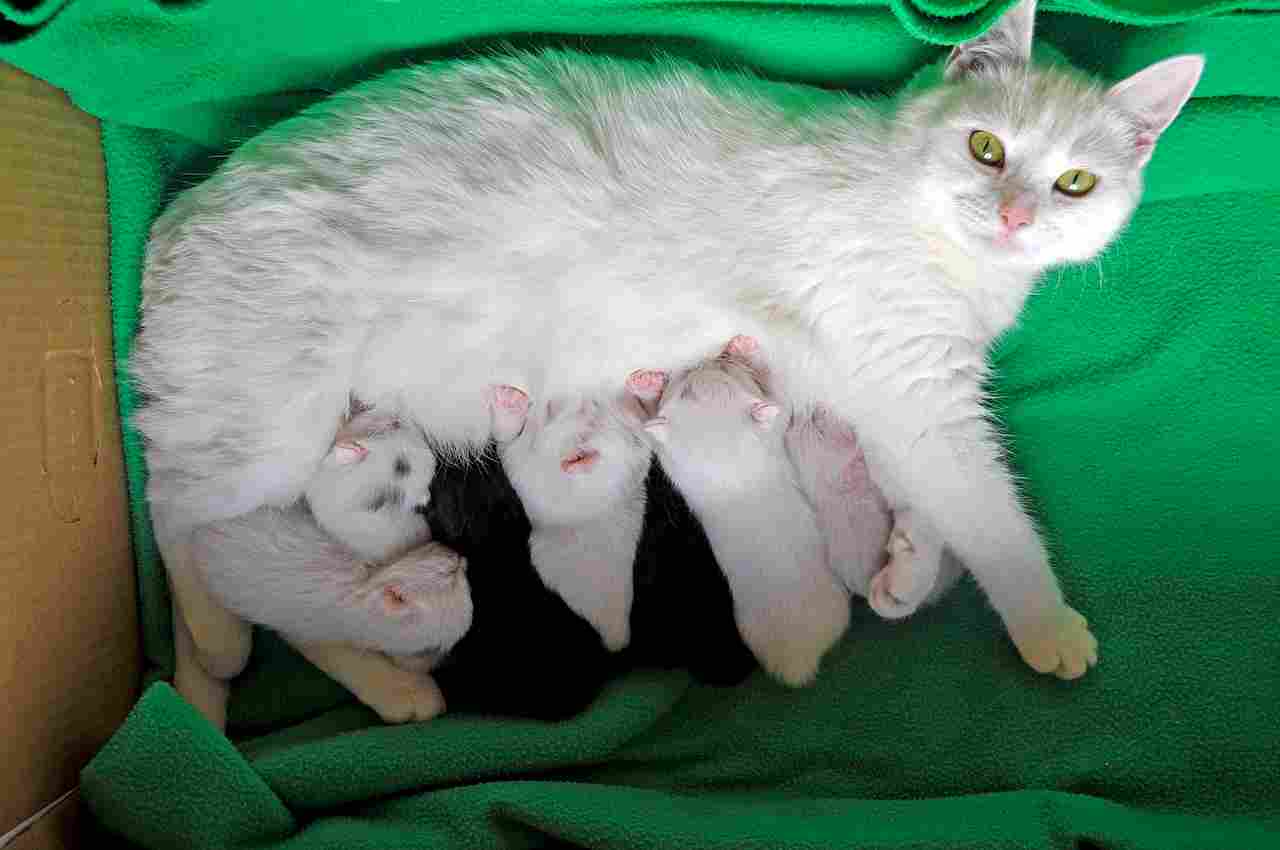
Cat (Felis catus):
Mothers care for and protect their kittens.
Provide nursing, grooming, and teach hunting skills.
Domesticated cats may show varying degrees of parental behavior.
Snake (Venomous and Non-venomous):
Limited parental care; many snake species abandon eggs after laying.
Viviparous species may provide some protection or guidance to offspring.
Comparison: Cats exhibit more extensive parental care, including teaching essential skills, while many snakes have limited involvement in their offspring’s care.
Ecological Implications: Parental behavior influences the survival and development of offspring, affecting population dynamics and species interactions in ecosystems.
20. Proximity to Human-Inhabited Areas:
Cat (Felis catus):
Domestic cats commonly inhabit human homes and urban areas.
Stray and feral populations exist in both urban and rural settings.
Snake (Venomous and Non-venomous):
Presence in human-inhabited areas varies; some species thrive in urban environments, while others prefer natural habitats.
Venomous snakes may pose risks in certain regions.
Comparison: Domestic cats, especially in urban areas, are more closely associated with humans compared to most snake species. Snakes’ proximity is often influenced by habitat preferences and human activities.
Ecological Implications: The presence of these species in human-inhabited areas can have ecological consequences, influencing local biodiversity, disease transmission, and human-wildlife interactions.
21. Behavior Toward Humans:
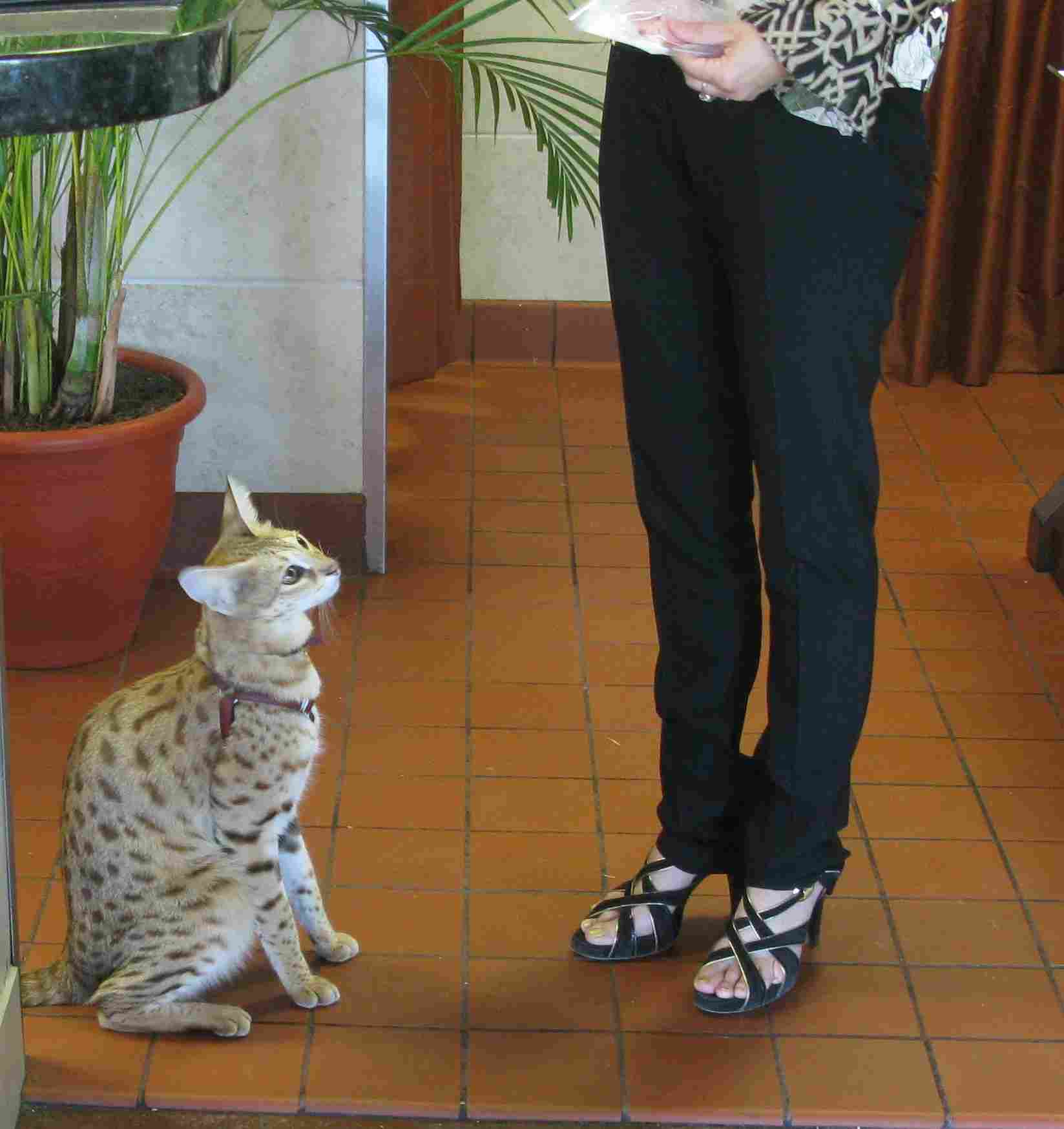
Cat (Felis catus):
Domestic cats may exhibit various behaviors, from affectionate to aloof.
Feral cats may be wary of humans, while others may become accustomed to human presence.
Snake (Venomous and Non-venomous):
Non-venomous snakes generally avoid humans and may flee when encountered.
Venomous snakes may exhibit defensive behavior if threatened, potentially leading to bites.
Comparison: Cats, especially domesticated ones, show a wide range of behaviors toward humans. Non-venomous snakes tend to avoid human contact, while venomous ones may act defensively if approached.
Ecological Implications: Human-animal interactions can impact the behavior and survival of these species, influencing their roles in local ecosystems and the potential risks they pose to human safety.
22. Danger Posed to Humans:
Cat (Felis catus):
Generally considered low risk, but bites and scratches can cause infections.
Domestic cats may carry zoonotic diseases, although transmission is rare.
Snake (Venomous and Non-venomous):
Non-venomous snakes pose minimal danger; bites are typically harmless but may cause infection.
Venomous snake bites can be life-threatening, requiring prompt medical attention.
Comparison: While both cats and snakes can pose some risk to humans, the potential danger is significantly higher with venomous snakes.
Ecological Implications: Understanding the potential risks helps humans coexist with these species and informs conservation efforts, particularly for venomous snakes.
23. Associated Precautions:
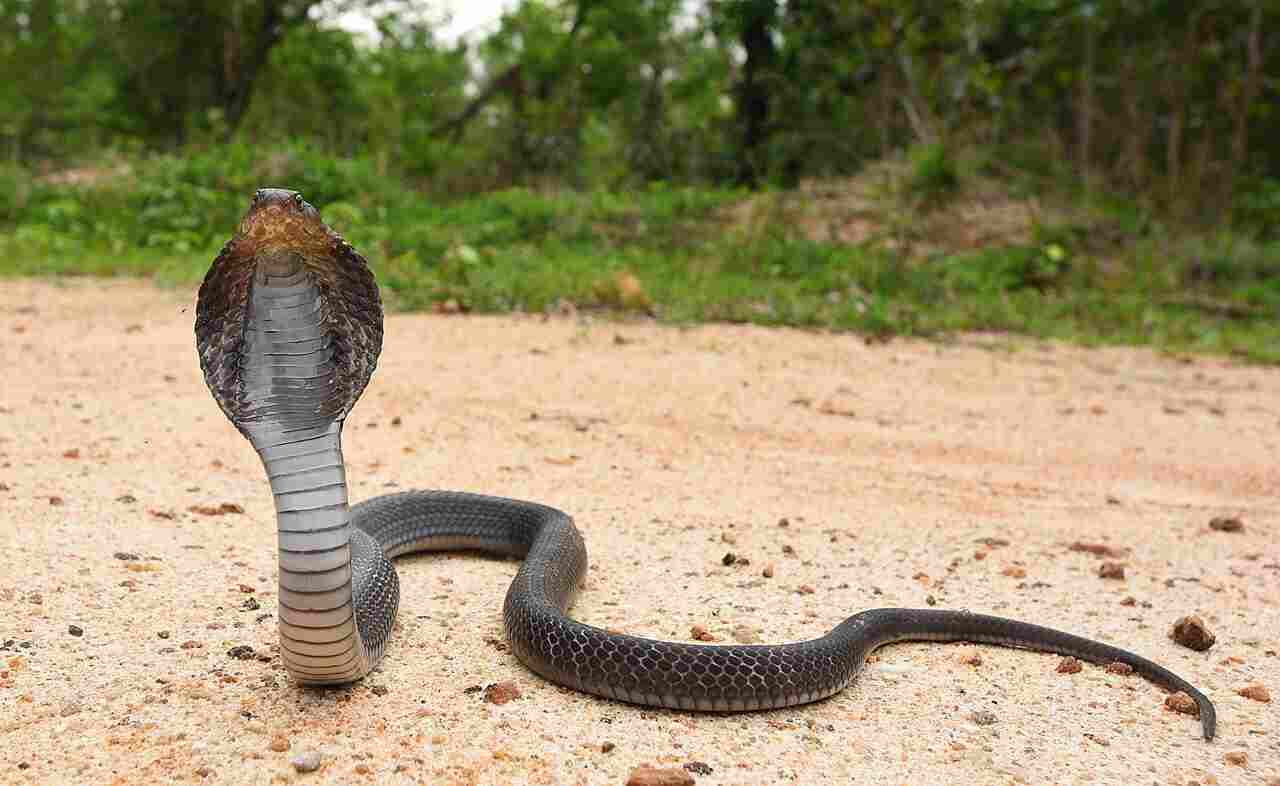
Cat (Felis catus):
Basic precautions include regular veterinary care, vaccinations, and responsible pet ownership.
Educating individuals about proper handling to prevent bites and scratches.
Snake (Venomous and Non-venomous):
Awareness and education about local snake species and their habitats.
Caution when encountering snakes in the wild, with a focus on prevention and safe handling practices.
Comparison: Precautions for cats center around responsible pet ownership, while precautions for snakes involve understanding and minimizing potential human-snake interactions, especially with venomous species.
Ecological Implications: Promoting responsible behavior and awareness contributes to the safety of both humans and these animals, fostering coexistence and minimizing negative ecological impacts.
24. Conservation Status:
Cat (Felis catus):
Domestic cats are not considered endangered; some wild felids face conservation challenges due to habitat loss and poaching.
Feral cat populations can impact local wildlife.
Snake (Venomous and Non-venomous):
Conservation status varies widely among snake species; some are endangered due to habitat loss and illegal trade.
Ecological roles of snakes make them essential for ecosystem balance.
Comparison: Domestic cats, while not endangered, can impact local ecosystems. Some snake species face threats, emphasizing the need for conservation efforts to preserve biodiversity.
Ecological Implications: Conservation efforts aim to protect these species and maintain the ecological balance they contribute to within their respective habitats.
Summary of Comparison
Comparison Summary:
Taxonomy:
Cats belong to the class Mammalia, while snakes belong to the class Reptilia (suborder: Serpentes for snakes).
Appearance:
Cats show diverse appearances among breeds, whereas snakes vary in body shape and coloration.
Venomous snakes may have specialized features like fangs.
Size:
Cats have a wide size range among breeds, typically smaller than snakes.
Snakes exhibit a broader size spectrum, from tiny to massive species.
Weight:
Cats generally have more consistent weights compared to the broad range observed in snakes.
Bite Force (PSI):
Cats rely on sharp teeth and claws, while snakes, especially venomous ones, use bite force for venom delivery.
Physical Offensive Advantages:
Cats use claws, teeth, agility, and speed.
Snakes employ constriction, venom, and stealth.
Physical Defensive Advantages:
Both rely on agility, speed, and camouflage for defense.
Speed:
Cats have higher sustained speeds, while snakes may rely more on bursts of speed.
Agility:
Both exhibit high levels of agility, with cats using limbs and snakes relying on serpentine movements.
Senses:
Cats emphasize vision and hearing, while snakes heavily rely on their sense of smell.
Overall Physical Capacity:
Both exhibit impressive physical capabilities adapted to their ecological roles.
Habitat Preference(s):
Cats are highly adaptable, while snakes show diverse habitat preferences.
Tracks:
Cats leave clear tracks with paw prints, while snakes, lacking limbs, do not leave traditional tracks.
Lifespan:
Cats generally have longer lifespans than many snakes.
Mode of Feeding:
Both are carnivores, but cats use teeth and claws for hunting, while snakes may rely on constriction or venom.
Intelligence:
Cats demonstrate higher levels of intelligence compared to most snakes.
Social Behavior:
Both tend to be solitary, with domestic cats showing more variation based on breed.
Mode of Reproduction:
Cats are viviparous, while snakes exhibit both oviparous and viviparous strategies.
Parental Behavior:
Cats exhibit more extensive parental care than many snakes.
Proximity to Human-Inhabited Areas:
Domestic cats, especially in urban areas, are more closely associated with humans than most snake species.
Behavior Toward Humans:
Cats show a wide range of behaviors toward humans, while snakes tend to avoid human contact.
Danger Posed to Humans:
Potential danger is significantly higher with venomous snakes compared to cats.
Associated Precautions:
Precautions for cats involve responsible pet ownership, while precautions for snakes focus on understanding and minimizing human-snake interactions.
Conservation Status:
Domestic cats are not endangered, while some snake species face conservation challenges.
Conclusion:
I). Similarities:
Both cats and snakes are carnivores, adapted for hunting and predation.
They exhibit varying levels of adaptability to different environments.
II). Differences:
Cats are mammals with live birth, while snakes show a range of reproductive strategies.
Cats generally have longer lifespans compared to many snake species.
Domestic cats are closely associated with humans, while snakes often maintain a more elusive presence.
The danger posed to humans is significantly higher with venomous snakes compared to cats.
